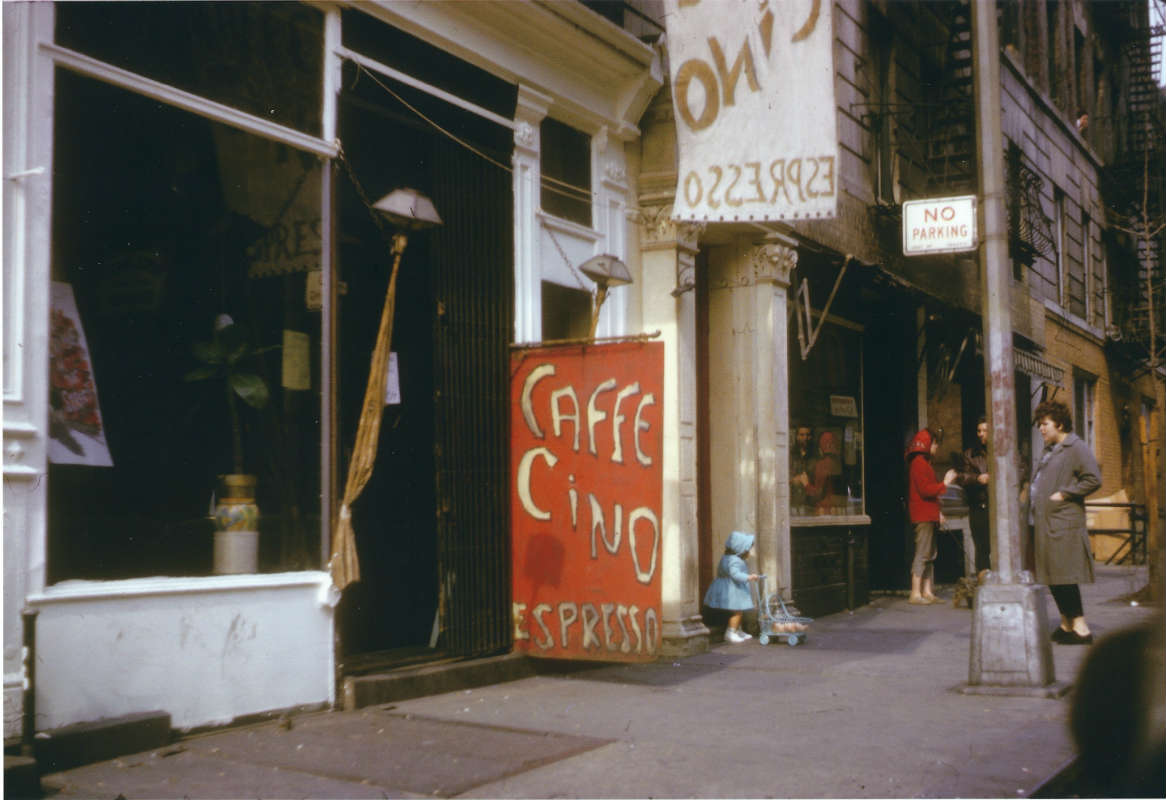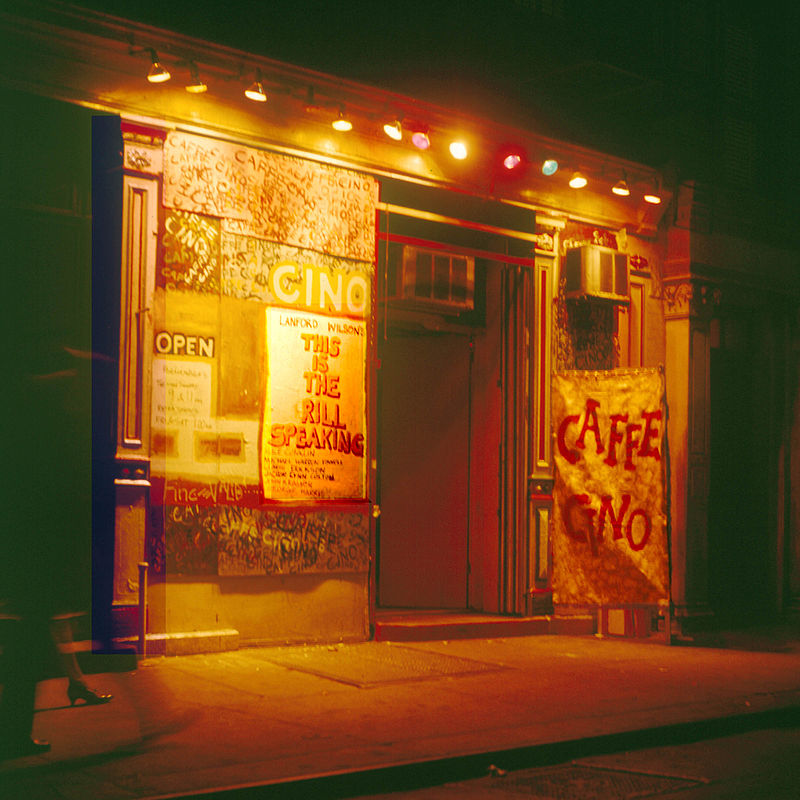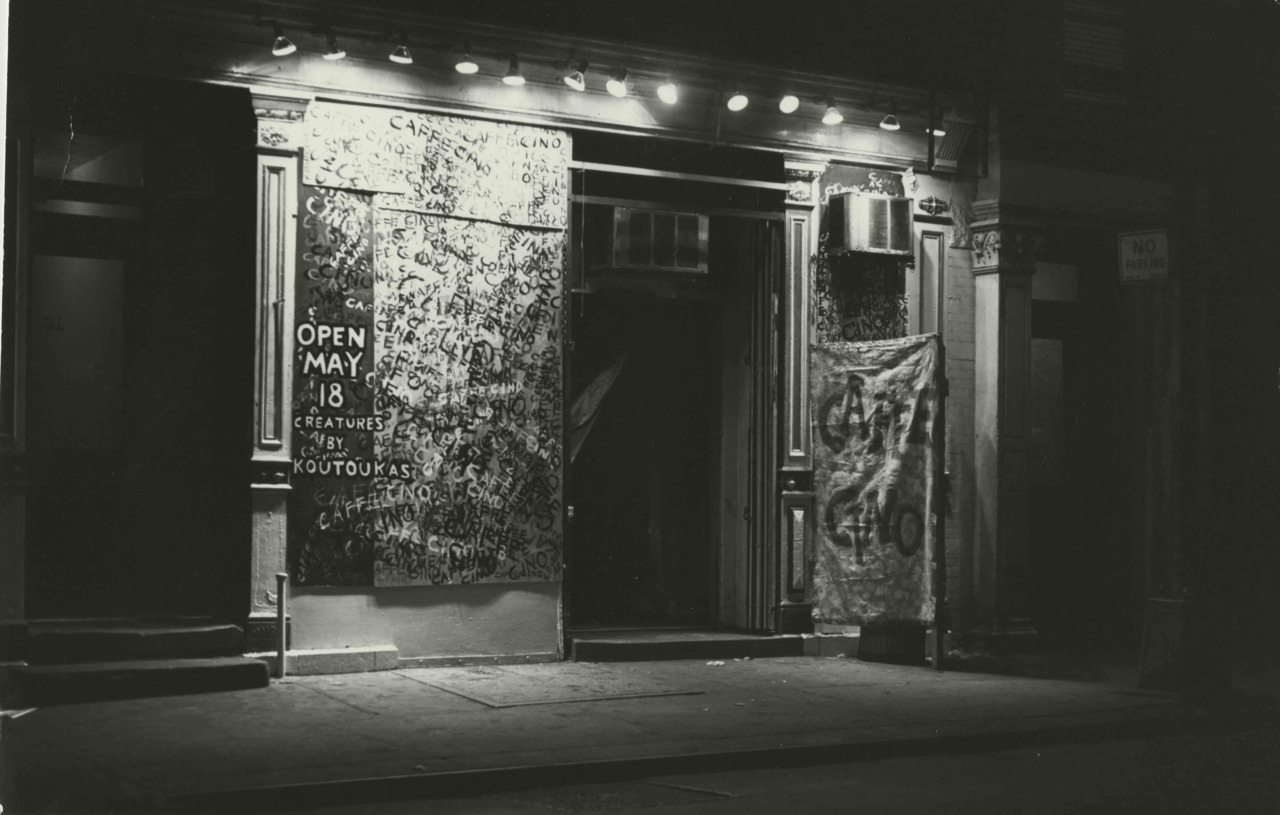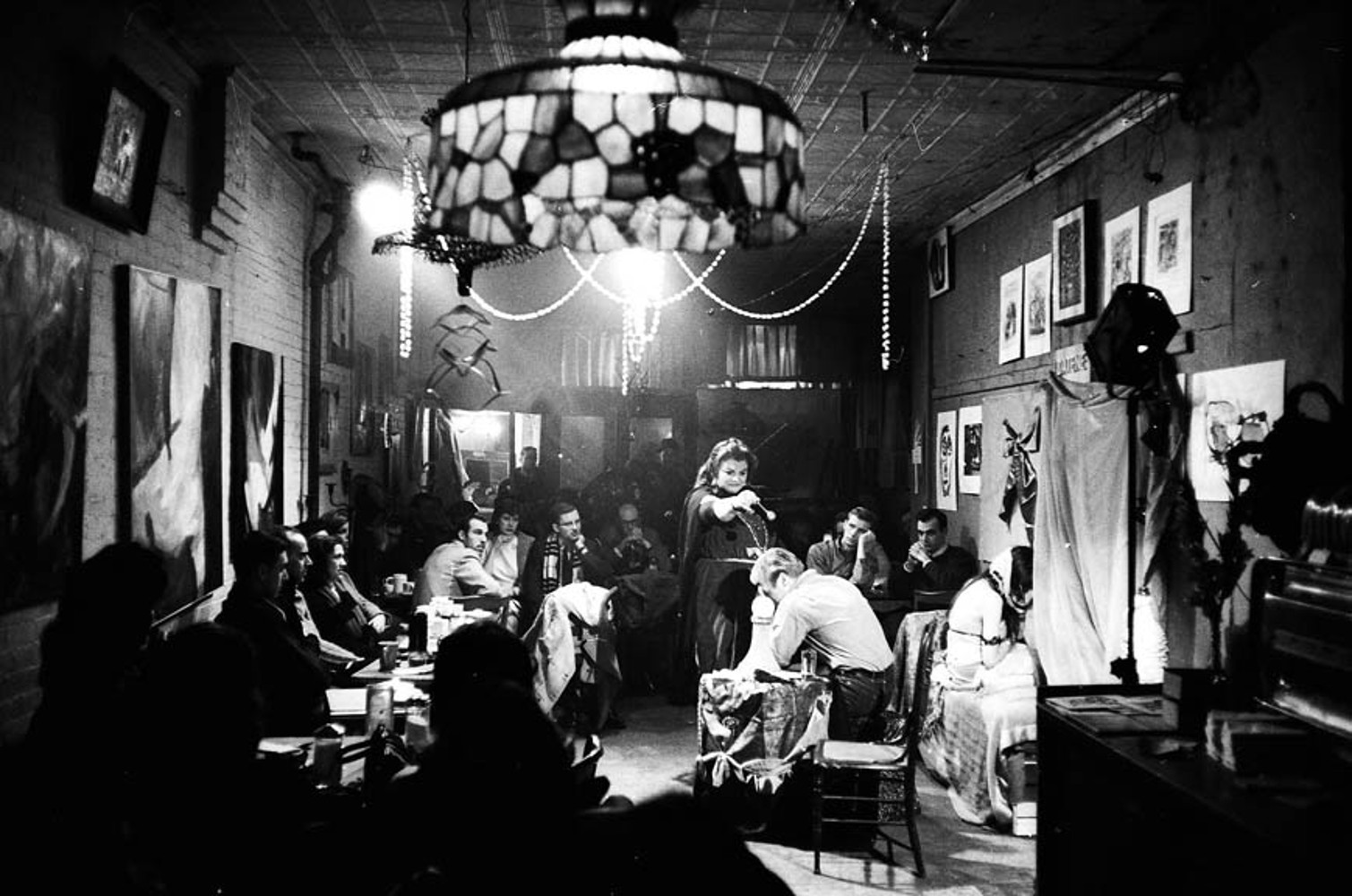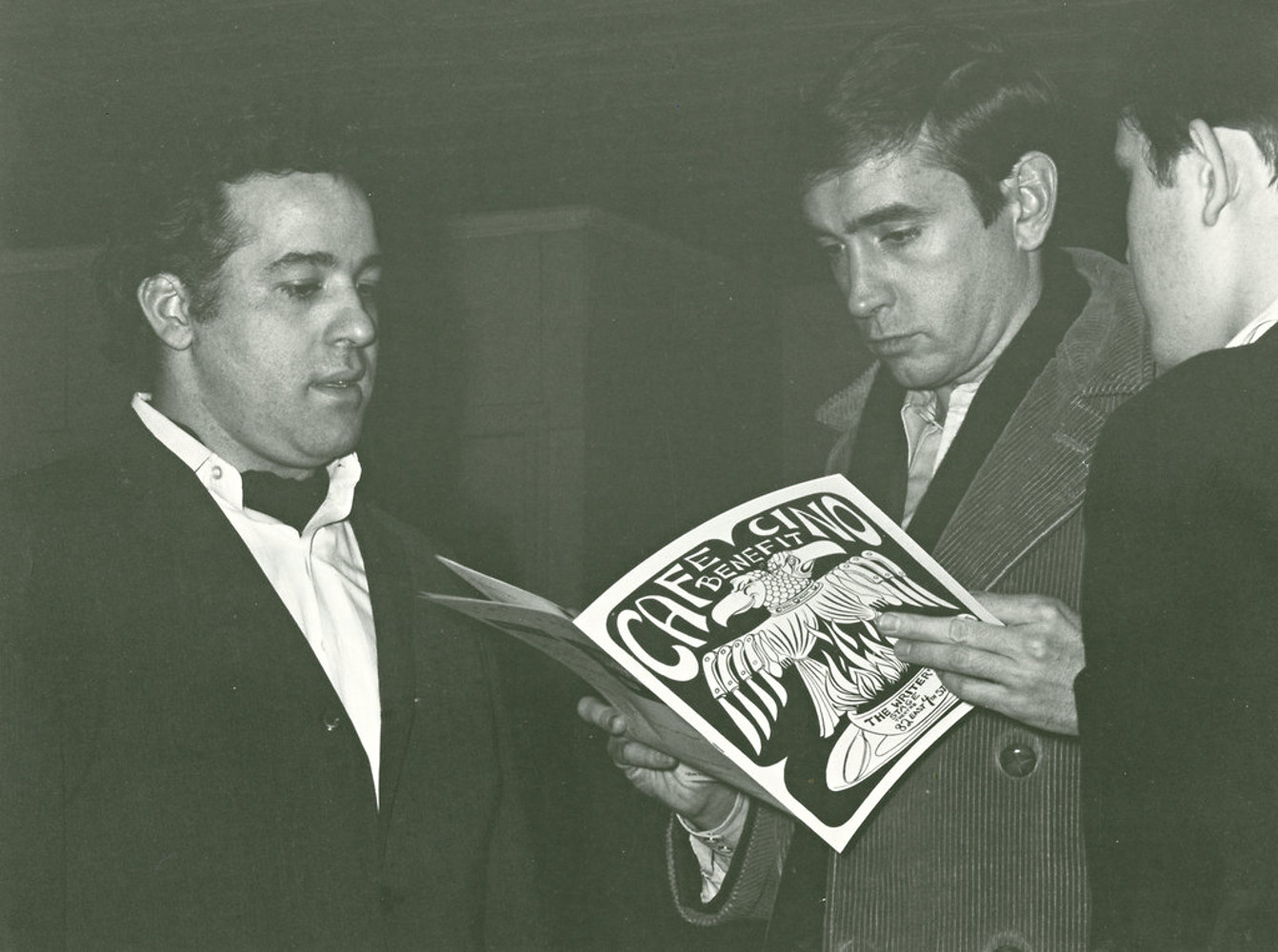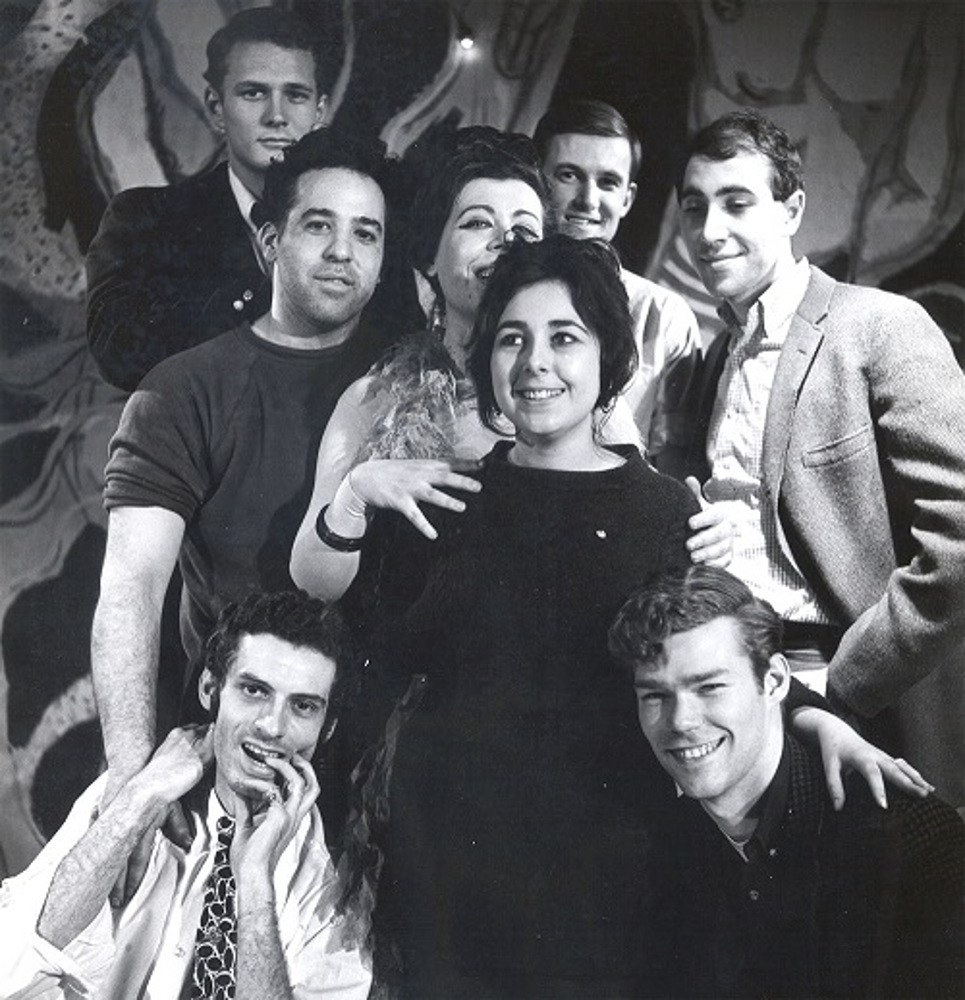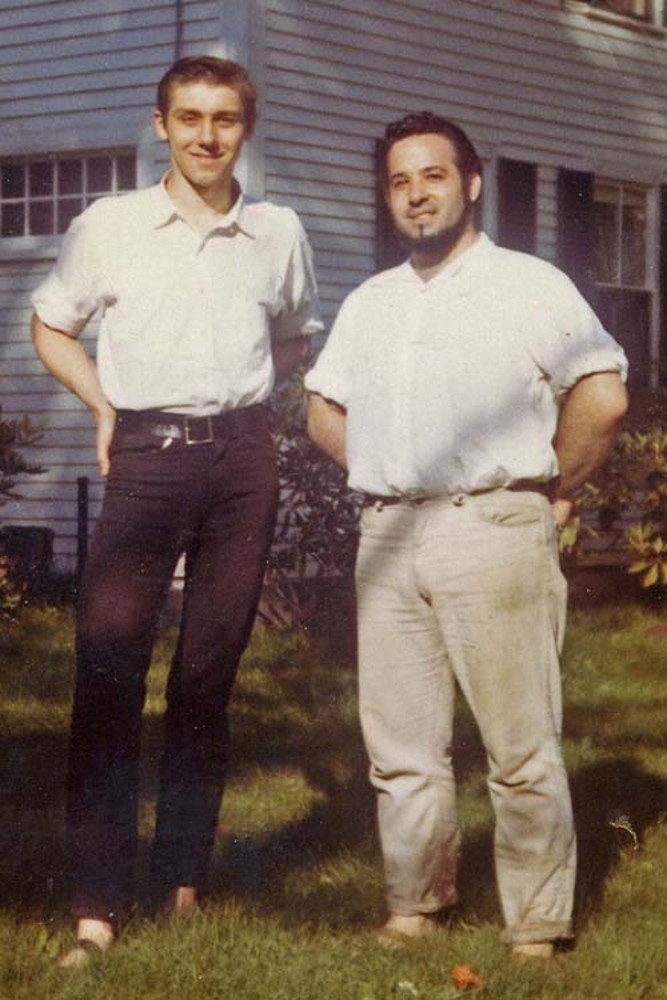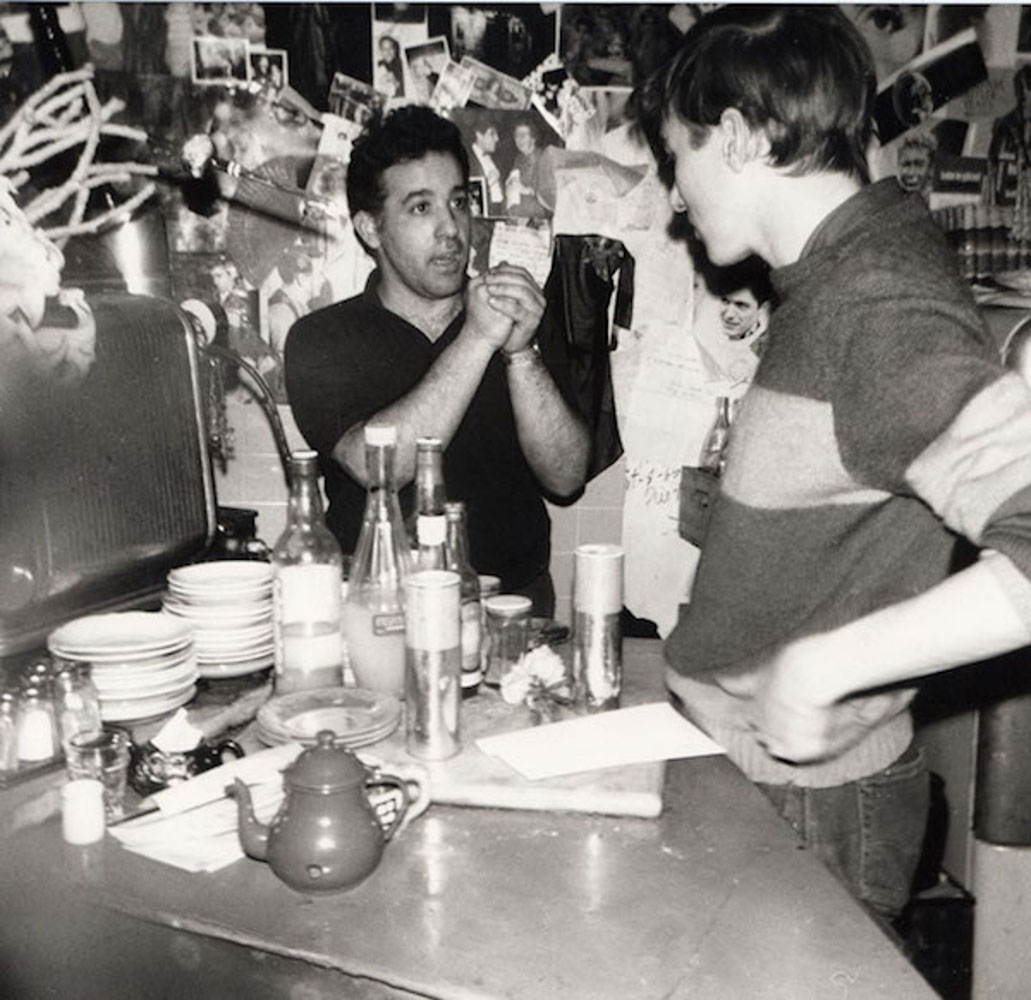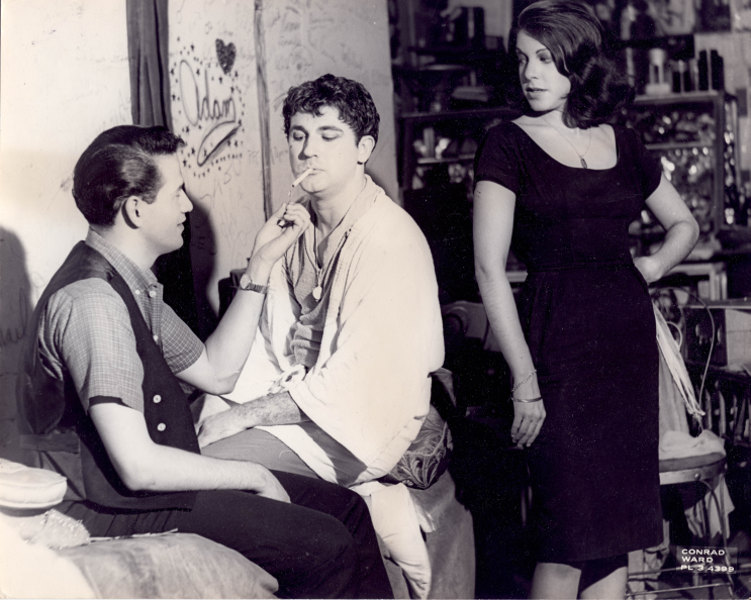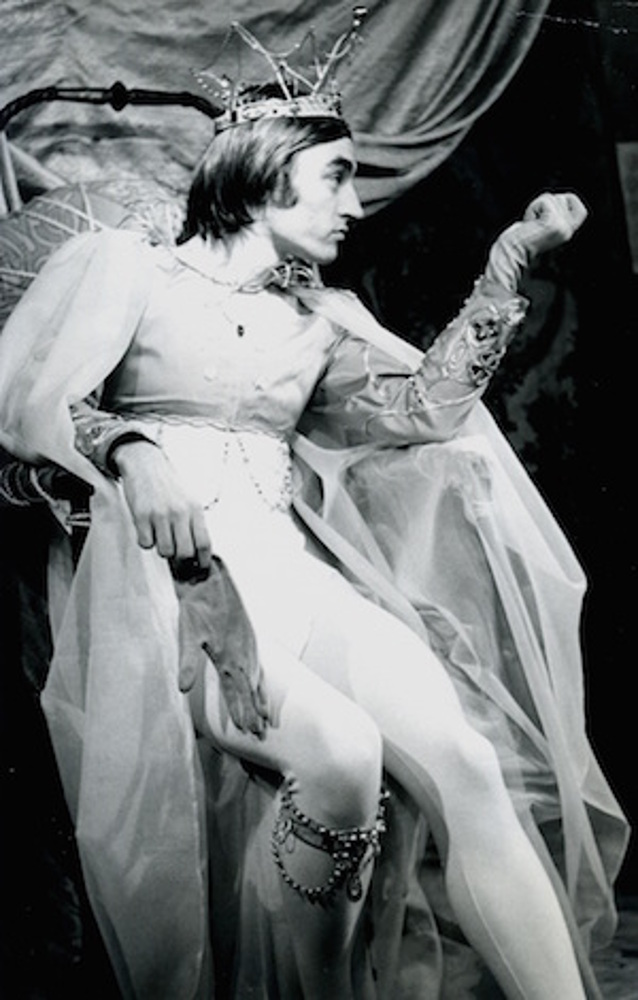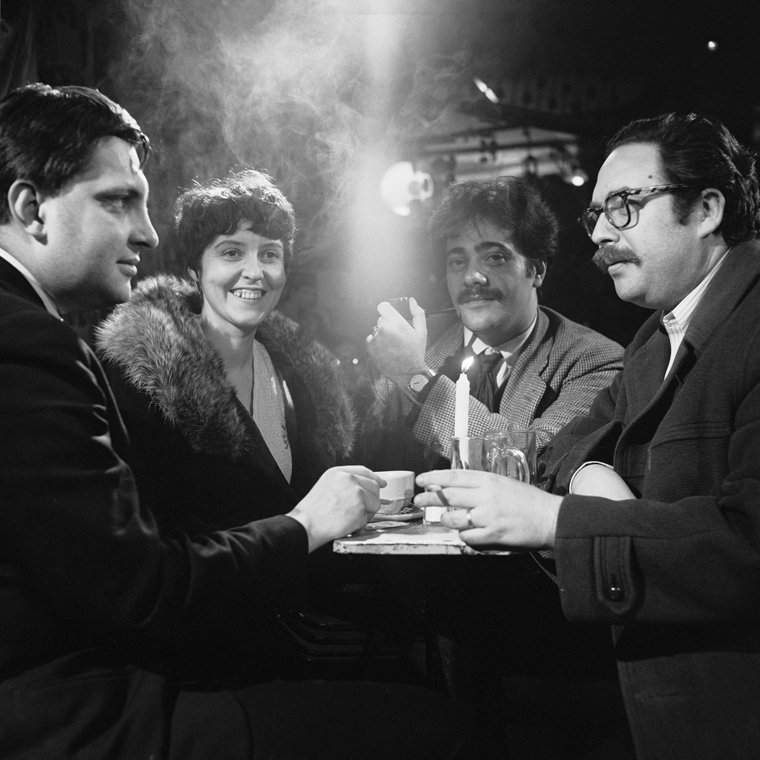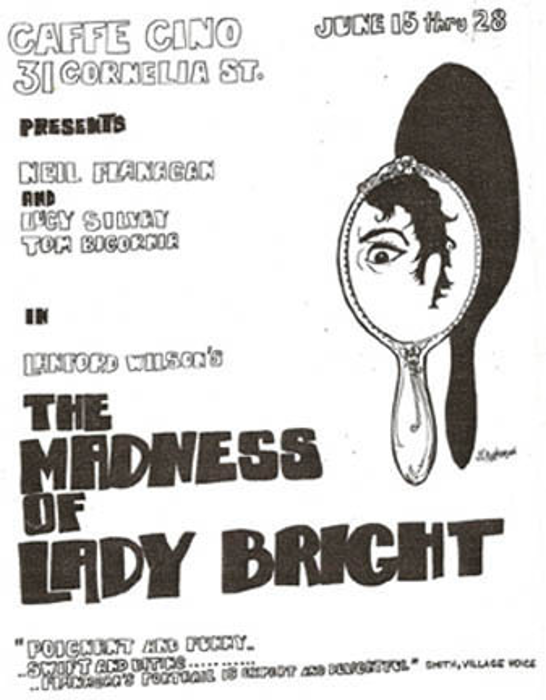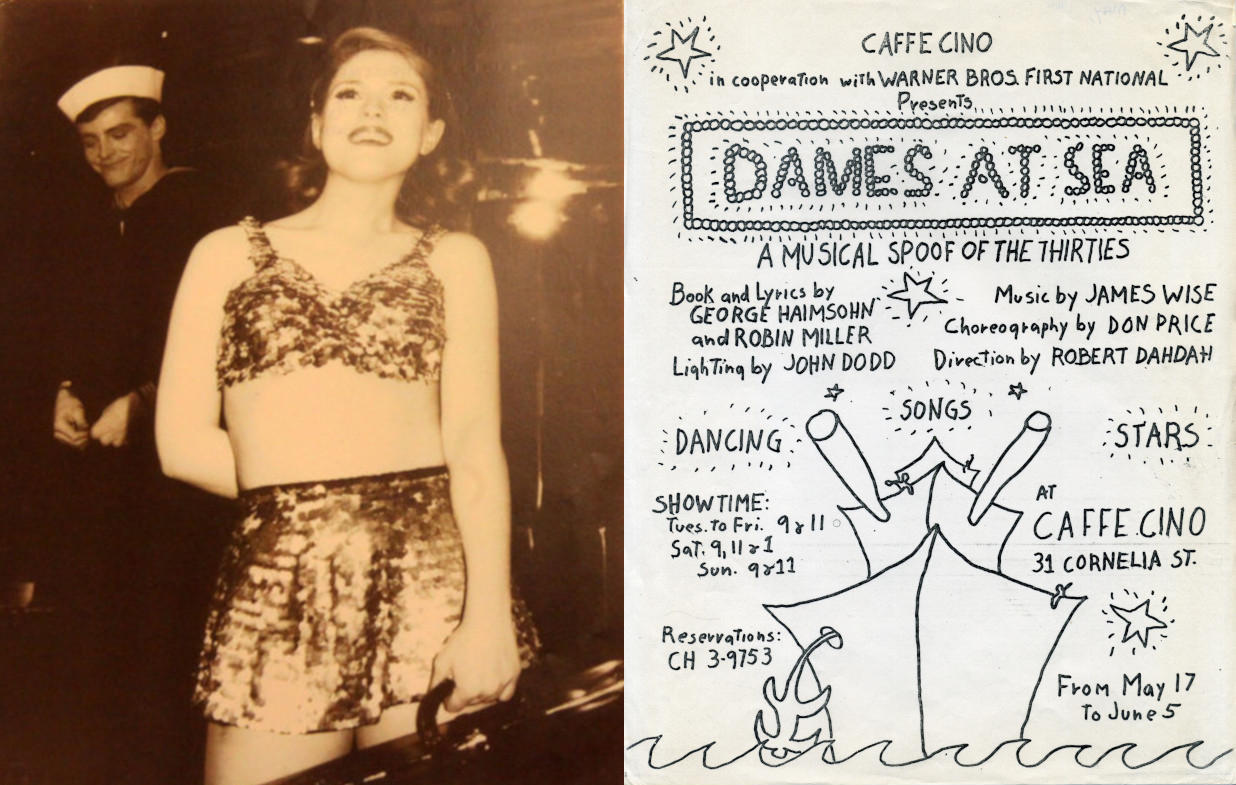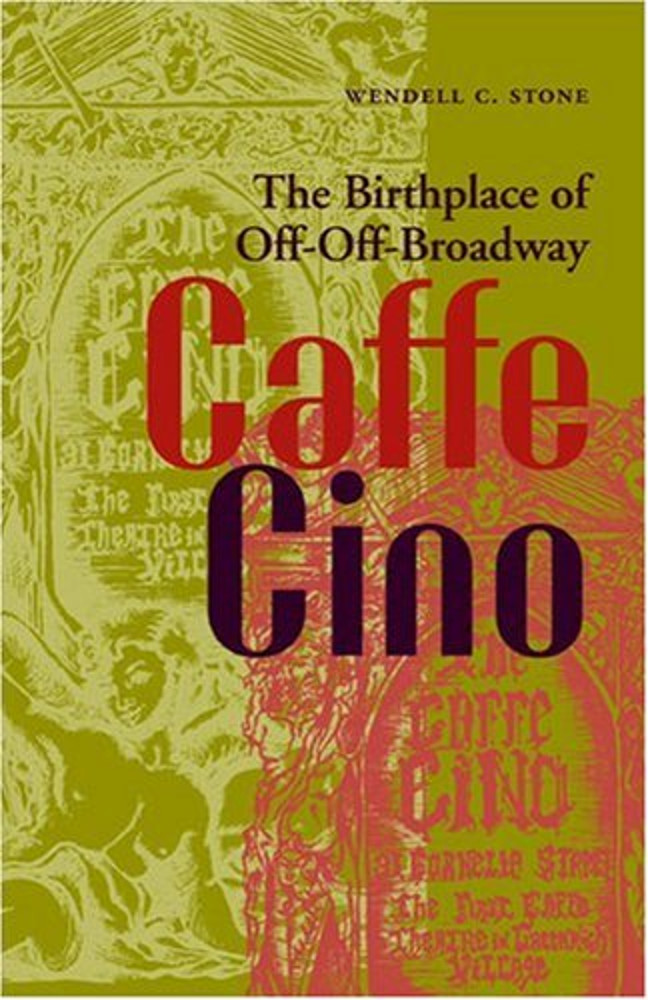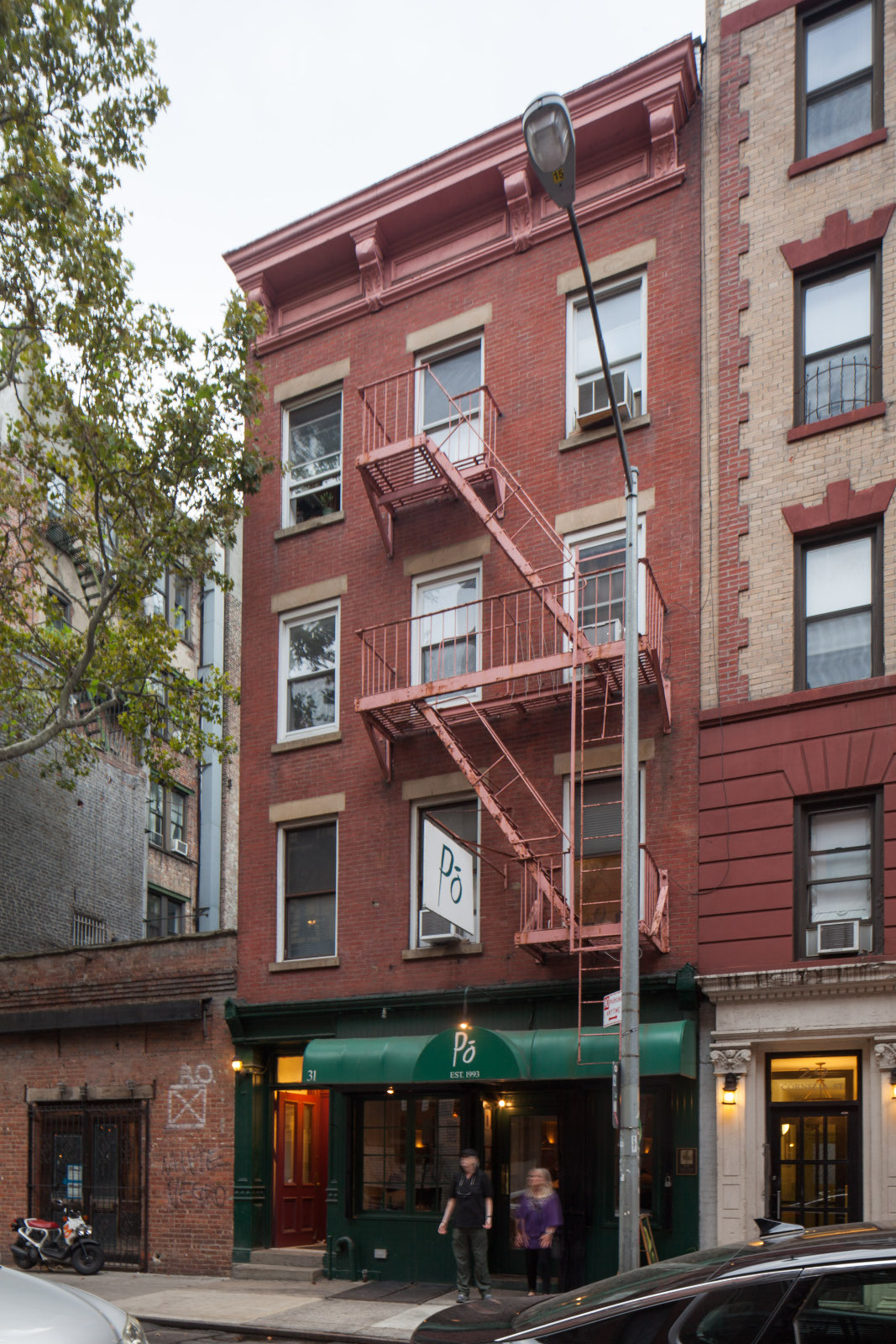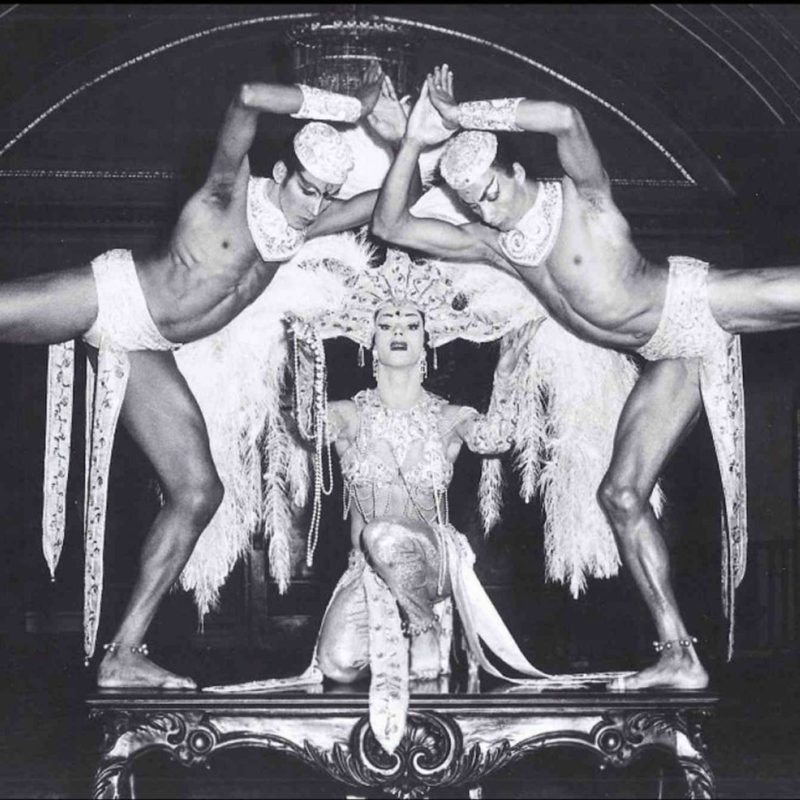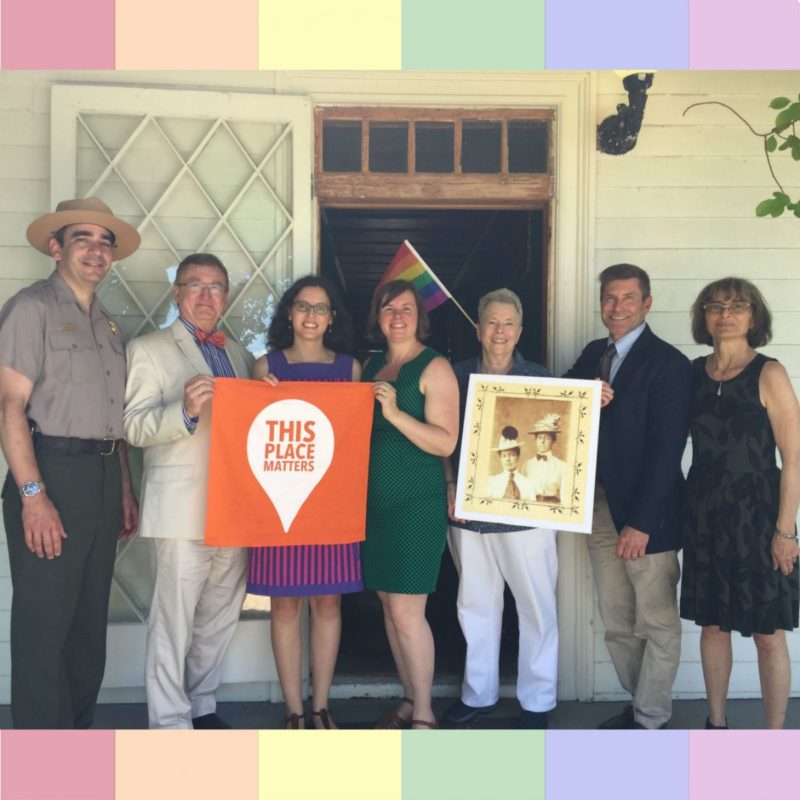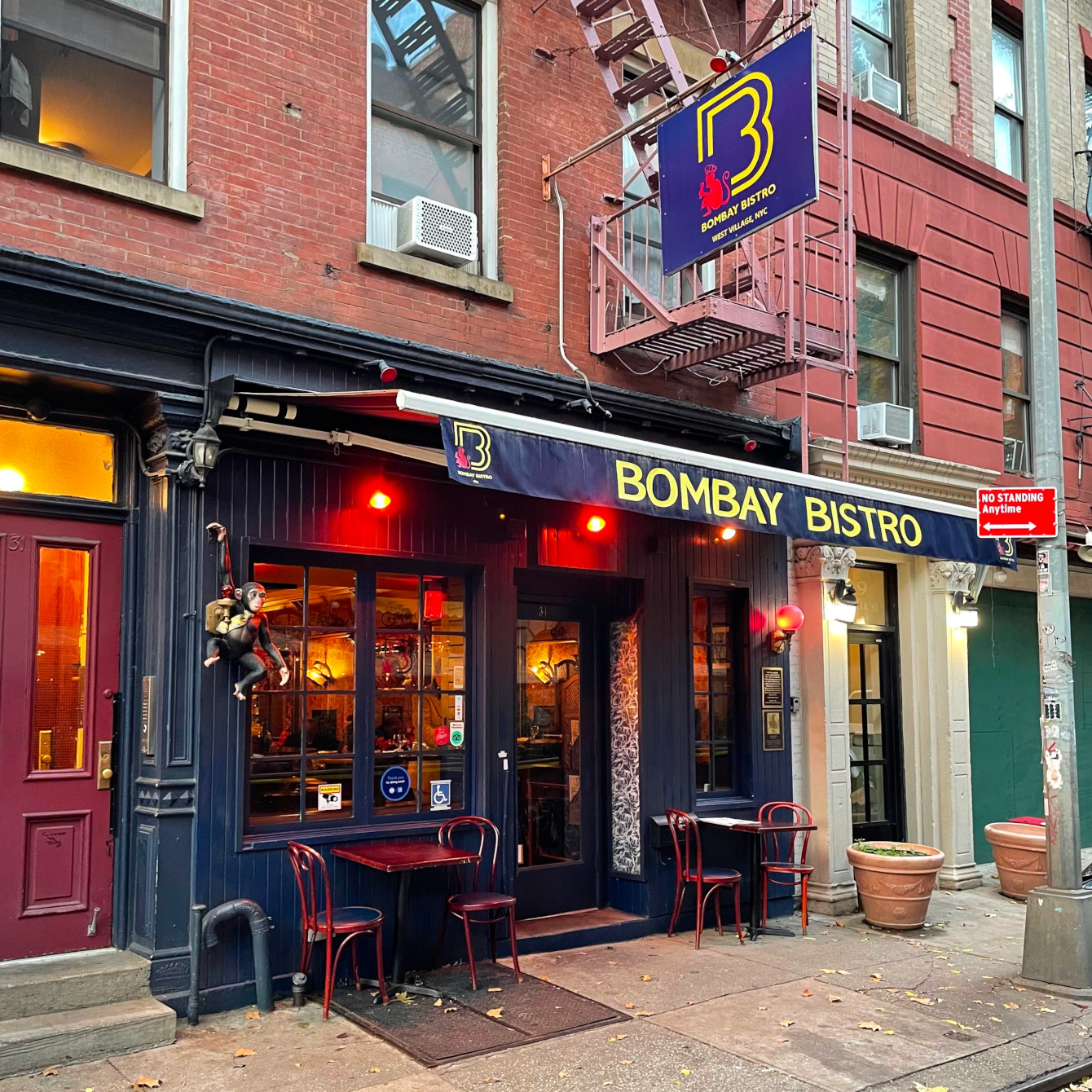
Caffe Cino
overview
The Caffe Cino is widely recognized as the birthplace of Off-Off-Broadway theater and was located on the ground floor of this building from 1958 to 1968.
It is also highly significant as a pioneer in the development of gay theater, at a time when it was still illegal to depict homosexuality on stage.
Through the efforts of the NYC LGBT Historic Sites Project, this site was listed on the New York State Register of Historic Places and the National Register of Historic Places in 2017. The Project’s advocacy also led to the site’s designation as a New York City Landmark by the NYC Landmarks Preservation Commission in 2019.
History
In 1958, Joe Cino (1931-1967) rented a ground-story commercial space here, originally intending to operate a coffeehouse with art displayed on the walls. He then allowed patrons to stage poetry readings and short avant-garde theatrical performances, including gay-themed works. With the summer 1960 production of the anti-war themed Flyspray, the Cino became New York’s first significant venue to feature the original works of unknown playwrights, which were often experimental, controversial, or campy, and produced at very small budgets. A year later, in 1961, four plays (including two gay-themed plays) by Doric Wilson helped establish the Cino as a venue not only for new work but also for new work with gay subject matter. It is now regarded as the birthplace of Off-Off-Broadway theater.
Cino’s partner Jon Torrey worked as the electrician and, early on, as the lighting designer. By July 1961, Johnny Dodd took over as the lighting designer and became known for his innovative work here.
The staging of Lanford Wilson‘s The Madness of Lady Bright in 1964 was the Cino’s breakthrough hit as well as another early original play to deal with gay subject matter. At the time, it broke Off-Off-Broadway records with a run of 250 performances. By 1965, the Cino had become well known for its gay-themed plays. For the first time in New York City, and perhaps in the country, LGBT people — on a year-round basis and in one centrally located space — regularly saw depictions of themselves in a more multi-dimensional and realistic light, contrasting the negative stereotypes that had permeated mainstream theater and film for most of the 20th century (it was, in fact, still illegal in the early and mid-1960s to depict homosexuality on the Broadway stage).
I never would have been a playwright without the Caffe Cino. I never certainly would have written about gay subjects that freely. That was the kind of empowerment that the place gave us. We were no longer victims.
The Caffe Cino provided an important platform for newly emerging gay playwrights, directors, and actors. Several of these figures would go on to win Pulitzer Prizes, Tony Awards, and various other prestigious theater awards and recognitions, and some founded influential theater companies. A selection of gay theater artists and their work at the Cino includes:
- Tom Eyen, playwright of Why Hannah’s Skirt Won’t Stay Down (1964)
- Neil Flanagan, actor and director who starred in the title role of The Madness of Lady Bright (1964), for which he won a 1967 Obie Award
- Paul Foster, playwright and director who wrote Balls (1964) and Hurrah for the Bridge (1965)
- Robert Heide, playwright of The Bed (1965), which ran for about 150 performances at the Cino and was turned into Andy Warhol‘s first experimental split-screen film of the same name, and Moon (1967)
- William M. Hoffman, playwright whose first work, Thank You, Miss Victoria (1965), was staged at the Cino
- H.M. Koutoukas, playwright, director, and actor who wrote Medea or Maybe the Stars May Understand or Veiled Strangers (1965) and With Creatures Make My Way (1965)
- Marshall W. Mason, director who, with playwright Lanford Wilson, formed what would become the longest collaboration between a director and playwright in American theater history
- Tom O’Horgan, director of A Masque (1963), Love and Variations (1963), and Love and Vexations (1963), and the recipient of a 1967 Obie Award for Best Off-Off-Broadway Director
- Robert Patrick, playwright, director, and actor who wrote six plays at the Cino, including his first-ever play, The Haunted Host (1964)
- Roberta Sklar, director (and pioneering as a woman in an era when directors were predominantly men) of The Flight Into Egypt (1963), With Creatures Make My Way (1965), and The Bed (1965)
- Charles Stanley, actor, dancer, and costume designer whose performances included Medea or Maybe the Stars May Understand or Veiled Strangers (1965) and Why Hannah’s Skirt Won’t Stay Down (1965)
- David Starkweather, playwright of The Love Pickle (1963), You May Go Home Again (1963), So, Who’s Afraid of Edward Albee? (1963), and The Family Joke (1965)
- Ronald Tavel, playwright of Vinyl (1967)
- Jean-Claude van Itallie, playwright of War (1965)
- Jeff Weiss, actor and playwright of A Funny Walk Home (1967)
- Doric Wilson, playwright of Babel Babel Little Tower, Pretty People, And He Made A Her, and Now She Dances! (one act version)
- Lanford Wilson, playwright whose eleven plays written for the Cino made him the venue’s most prolific playwright of original work, including The Madness of Lady Bright (1964), his first significant gay-themed play
The most successful production here was George Haimsohn and Robin Miller‘s Dames at Sea, which was directed by Robert Dahdah, choreographed by Don Price, and scored by Jim Wise. It also introduced teenager Bernadette Peters in 1966. The Cino’s audience included established cultural figures, such as playwrights Edward Albee (an avid supporter), Arthur Miller, and Irene Fornés, actress Marlene Dietrich, artist Andy Warhol, and musician Tiny Tim. According to actor Michael Warren Powell, who had performed in The Madness of Lady Bright at the Cino, famed choreographer Jerome Robbins would often stop by after the Caffe had closed for the evening so that he and Cino “could dance on the tiny stage.”
The coffeehouse itself also served as a significant meeting spot for gay men. It closed in 1968, a year after Cino’s suicide following Torrey’s accidental death.
Landmark Designations for LGBT Significance
In November 2017, through the NYC LGBT Historic Sites Project’s extensive research and writing, the Caffe Cino was listed on the National Register of Historic Places by the U.S. Department of the Interior, following the site’s listing, in September 2017, on the New York State Register of Historic Places. In June 2019, based on recommendations by the Project, the NYC Landmarks Preservation Commission (LPC) designated the Caffe Cino a New York City Landmark. The National Register report, LPC designation report, and Project testimony are available in the “Read More” section below.
Entry by Amanda Davis, project manager, and Jay Shockley, project director (March 2017; last revised November 2022).
NOTE: Names above in bold indicate LGBT people.
Building Information
- Architect or Builder: Benjamin Warner
- Year Built: 1877
Sources
Billy J. Harbin, Kim Marra, and Robert A. Schanke, “Joseph Cino,” The Gay & Lesbian Theatrical Legacy : A Biographical Dictionary of Major Figures in American Stage History in the Pre-Stonewall Era (Ann Arbor: University of Michigan Press, 2007).
Christopher D. Brazee, Gale Harris, and Jay Shockley, “Gay Pride Month 2015,” New York City Landmarks Preservation Commission (June 2013).
Daniel Hurewitz, Stepping Out: Nine Walks Through New York City’s Gay and Lesbian Past (New York: Henry Holt & Co., 1997).
Paula Martinac, The Queerest Places: A Guide to Gay and Lesbian Historic Sites (New York: Henry Holt & Co., 1997).
Robert Heide, “Magic Time at the Caffe Cino,” New York Native, May 6-19, 1985, 29-30.
Wendell C. Stone, Caffe Cino: The Birthplace of Off-Off-Broadway Theater (Carbondale, Illinois: Southern Illinois University Press, 2005).
Read More
- NYC Landmarks Preservation Commission Designation Report (June 2019)
- Project Testimony for LPC Public Hearing (June 2019)
- National Register of Historic Places Nomination (November 2017)
- Caffe Cino Listed on the National Register of Historic Places (November 2017)
- Magie Dominic NYU Talk on Caffe Cino (March 2015)
Do you have more information about this site?
This project is enriched by your participation! Do you have your own images of this site? Or a story to share? Would you like to suggest a different historic site?
